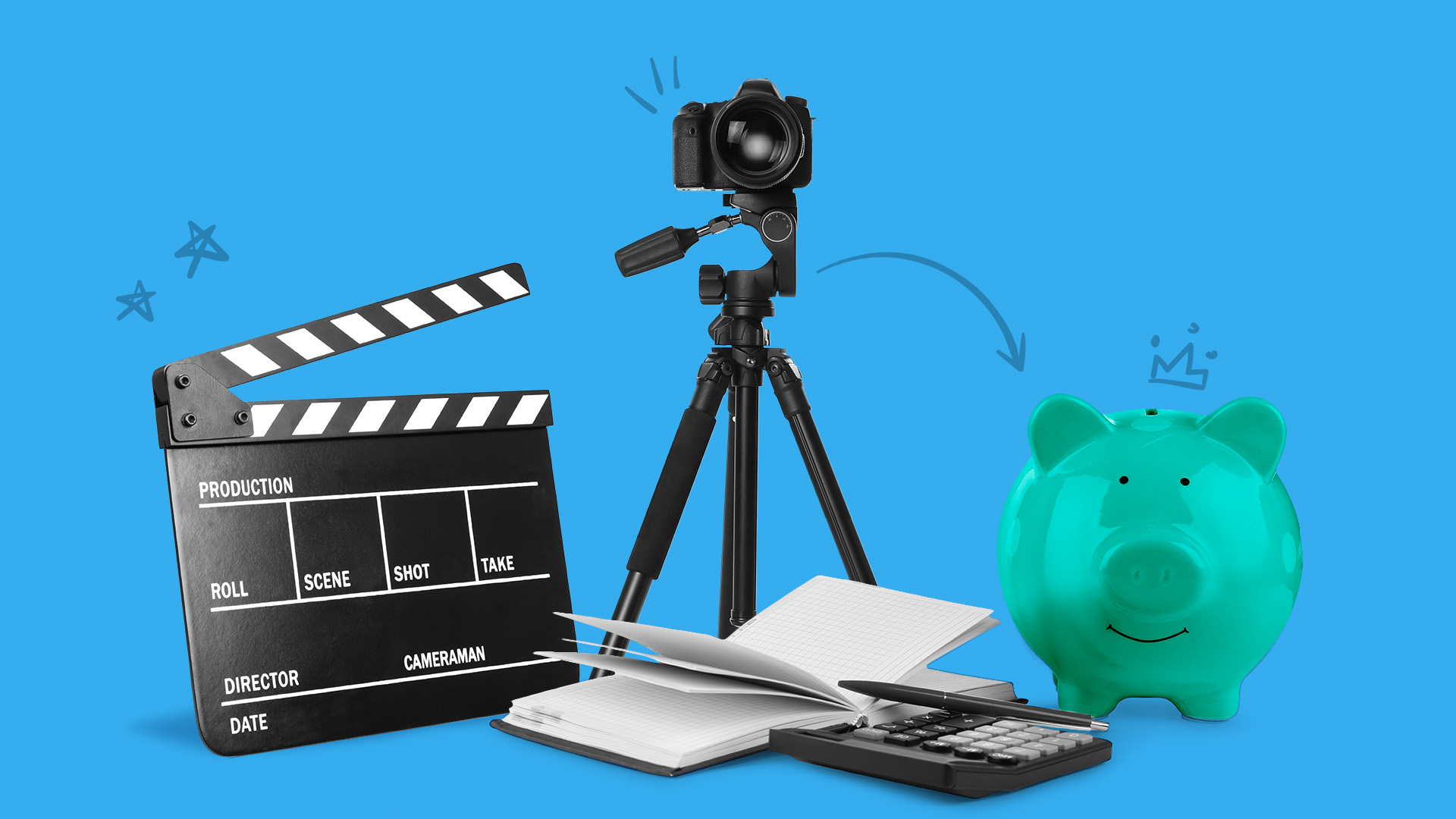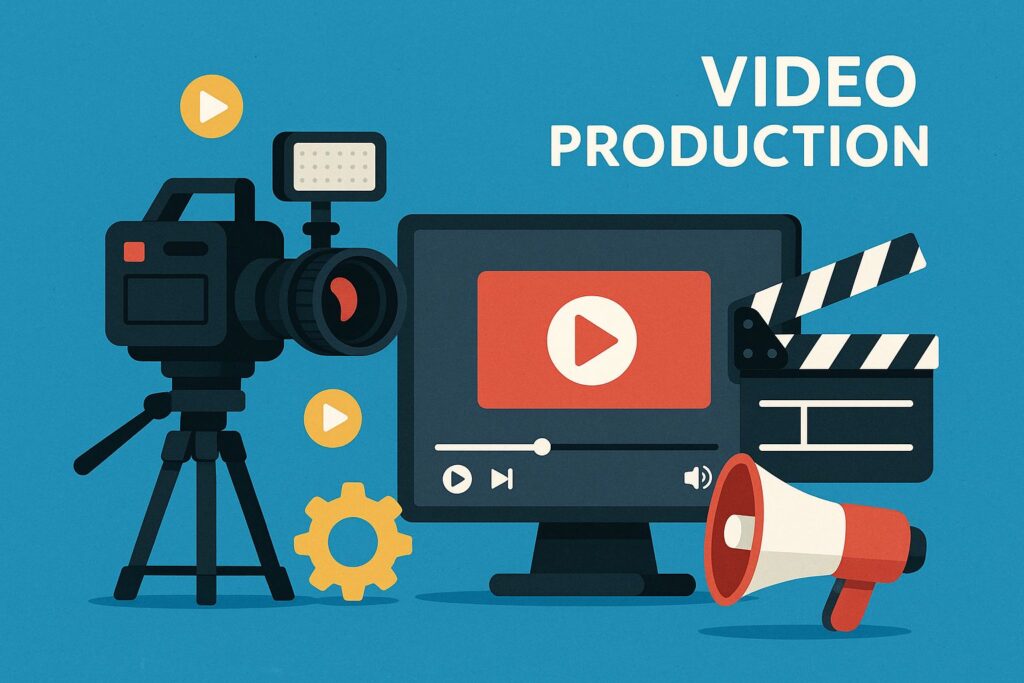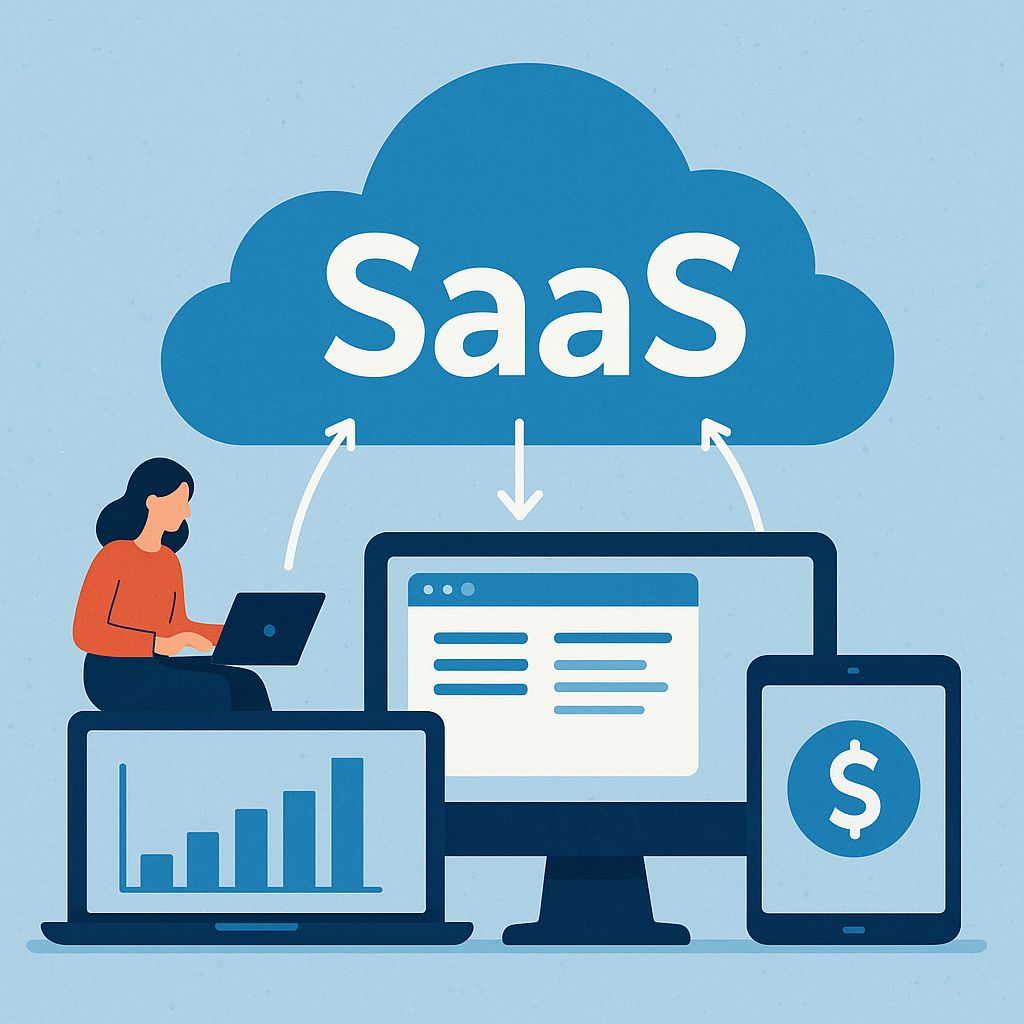Key Takeaways
- Custom videos can increase app downloads by up to 85% while costing as little as $500 for professional quality
- Short 30-60 second feature showcase videos deliver the highest ROI for most mobile apps and SaaS products
- In-app user retention increases by 42% when video tutorials replace text-based onboarding
- DIY video tools like Riverside and Canva have dramatically reduced the barrier to entry for creating professional app videos
- TopExplainers offers specialized SaaS explainer videos with unlimited revisions starting at $497 for a 30-second custom animation
Videos sell apps. Period. When users can see your software in action before downloading, conversion rates jump dramatically. But most developers assume custom videos require Hollywood budgets, leaving this powerful marketing tool untapped. The truth? Affordable custom videos for your mobile app or SaaS product are more accessible than ever.
Looking for a cost-effective way to showcase your app’s value? TopExplainers specializes in creating high-converting SaaS and app explainer videos that clearly demonstrate your product’s benefits in as little as 30 seconds. Their streamlined production process delivers professional results at a fraction of traditional agency prices.
What Makes Custom Videos Essential for App Success
The app marketplace has become a battlefield. With millions of options competing for attention, standing out requires more than screenshots and text descriptions. Custom videos cut through the noise by showing – not telling – what makes your app worth downloading. They create an immediate emotional connection that static images simply can’t match.
The numbers are compelling: apps with video previews see download rates increase by 35-85% compared to those without. This dramatic improvement occurs because videos address the primary barrier to downloads – uncertainty about what the app actually does and how it works. When users can visualize themselves using your solution, the perceived risk of trying something new plummets. For more insights on creating engaging app videos, check out this guide on SaaS explainer videos.

Higher User Retention Rates with Video Onboarding
Getting downloads is only half the battle. The real challenge? Keeping users engaged past the first few days. Custom onboarding videos dramatically improve retention by quickly demonstrating value and reducing confusion. Studies show that apps using video tutorials during onboarding see 42% higher retention rates after 30 days compared to text-only instructions.
Video onboarding works because it addresses multiple learning styles simultaneously. Visual learners see the interface, auditory learners hear the instructions, and the demonstration provides context that written directions often lack. This comprehensive approach means fewer frustrated users abandoning your app before discovering its full potential. For more insights, explore how explainer videos convert viewers into customers.
The most effective onboarding videos keep it simple: highlight 2-3 core features that deliver immediate value, use actual screens from your app, and keep the total length under 90 seconds. Remember that users want to use your app, not watch videos about it.
Conversion Rate Increase: The Numbers Don’t Lie
For SaaS products with free trials or freemium models, videos dramatically improve conversion to paid plans. Companies implementing custom videos on their landing pages see conversion improvements of 20-80%, with the average falling around 34%. This happens because videos efficiently communicate complex value propositions that would take paragraphs of text to explain.
The conversion power of video is particularly pronounced for technical or feature-rich applications. When potential customers can watch your solution solve their specific problem in real-time, the perceived value instantly becomes more tangible. This visual demonstration bypasses skepticism and speaks directly to the pain point that drove them to search for a solution in the first place.
User Understanding Jumps 65% with Visual Explanations
Complex features often go unused simply because users don’t understand them. Custom videos bridge this comprehension gap, with studies showing feature adoption increases by up to 65% when video explanations are available. This improved understanding translates directly to higher perceived value and user satisfaction.
Videos excel at demonstrating workflows and multi-step processes that might seem complicated in writing. A 45-second demonstration can replace pages of documentation while being significantly more effective at teaching proper usage. This efficiency becomes particularly valuable for apps with powerful but non-intuitive features that might otherwise remain undiscovered.
Budget-Friendly Video Production Options for Developers
Professional video production has traditionally been expensive, but the landscape has changed dramatically. Today’s developers can choose from a spectrum of options ranging from completely DIY to specialized production services designed specifically for app videos. The key is matching your approach to your budget, timeline, and quality requirements.
Pre-Made Templates vs. Custom Videos: Cost Breakdown
Template-based video creation platforms offer the lowest entry point, typically ranging from $15-100 per month for subscription services. These platforms provide pre-designed animations, transitions, and layouts that you can customize with your app’s screenshots and messaging. The trade-off is distinctiveness – your video may look similar to others using the same templates.
The $500-$1500 Sweet Spot for Quality Videos
The most dramatic value proposition exists in the $500-1500 range for custom app videos. At this price point, specialized services like TopExplainers offer professional-quality productions specifically designed for software products. These services understand the unique requirements of app demonstration and typically include script writing, custom animation, professional voiceover, and multiple revision rounds.
What makes this price range so effective is the focus on app-specific expertise rather than general video production. Companies in this space have refined their processes to efficiently create videos that drive downloads and engagement. Many offer packages with different video lengths – typically 30, 60, or 90 seconds – allowing you to match your investment to your specific marketing needs. For those looking to create impactful content quickly, you can even get a business explainer video in 7 days, ensuring your marketing strategy stays on track.
DIY Tools That Actually Work
Modern screen recording and editing tools have dramatically lowered the barrier to creating decent app demonstrations in-house. Applications like Camtasia ($249 one-time) or ScreenFlow ($169 for Mac) combine recording and editing capabilities specifically designed for software demonstrations. For teams with limited budgets, these tools represent the best balance of cost and quality for basic demonstration videos.
For more advanced DIY production, consider Riverside.fm for recording high-quality demos with remote team members, combined with Canva’s video editor for adding professional transitions and text overlays. This combination allows even non-technical team members to create polished app demonstrations for under $30/month in subscription costs.
The key to successful DIY production lies in preparation. Create a detailed script, practice your demonstration flow several times before recording, and invest in a decent microphone if including voice narration. The difference between amateur and professional-looking results often comes down to these simple preparations rather than expensive equipment.
When to Outsource vs. Create In-House
The decision to outsource or create videos in-house should be based on three factors: available internal expertise, required quality level, and time constraints. Outsourcing becomes the clear choice when your video will be featured prominently in your marketing (such as on your landing page or app store listing), when you lack team members with video production experience, or when you need results quickly.
In-house production makes sense for tutorial content, feature updates, and support videos where authenticity matters more than polish. Many successful apps use a hybrid approach – investing in professional production for their core marketing videos while handling supplementary content creation internally. This strategy maximizes impact while keeping overall video production costs manageable.

5 Types of Videos Every App Needs
Different video types serve different purposes throughout the user journey. A comprehensive video strategy typically includes multiple formats, each optimized for specific marketing and support objectives. Start with the most critical videos for your business model, then expand your library as resources allow.
1. Feature Showcase (30-60 seconds)
The feature showcase serves as your app’s elevator pitch – a concise, visually compelling overview of your core value proposition. These videos perform best when they focus on benefits rather than technical specifications, answering the fundamental question: “How will this app improve my life?” Keep these videos under 60 seconds to maximize completion rates, with 30-45 seconds being the sweet spot for most applications.
Effective feature showcases follow a simple formula: identify a problem, demonstrate your solution, and highlight the positive outcome. This problem-solution framework creates immediate relevance for viewers experiencing the pain point you address. Include actual screens from your app but avoid overwhelming viewers with every feature – focus instead on the 2-3 capabilities that most directly deliver your core value.
2. User Onboarding Tutorials
Onboarding tutorials bridge the gap between download and active usage by quickly orienting new users to your interface. These videos typically range from 1-3 minutes and walk users through initial setup, account creation, and basic navigation. The goal is to get users to their “aha moment” – the point where they experience your app’s value – as efficiently as possible. For more on creating effective tutorials, check out this guide on SaaS explainer videos.
Effective onboarding videos use a progressive disclosure approach, introducing features in order of importance rather than comprehensiveness. They include clear callouts for interactive elements, demonstrate common workflows, and highlight customization options that create personal investment in the platform. Consider breaking longer onboarding content into a series of shorter videos (30-45 seconds each) focused on specific actions to avoid overwhelming new users.
3. Problem-Solution Demonstrations
Problem-solution videos focus on specific use cases, showing exactly how your app solves particular challenges your users face. Unlike general feature showcases, these videos target distinct user segments with tailored messaging. For example, a project management app might create separate videos for team leaders, individual contributors, and executives, each demonstrating relevant workflows. Learn how to boost sales with custom animated explainer videos to effectively communicate these solutions.
The most effective problem-solution videos come from actual user research, addressing common pain points discovered through support tickets, user interviews, or analytics. Keep these videos focused – address a single problem per video rather than trying to cover multiple use cases. This targeted approach improves relevance and makes the content more discoverable for users searching for specific solutions.
4. App Store Preview Videos
App store preview videos face unique constraints imposed by platform guidelines but offer massive impact on download rates. These silent, autoplay videos appear directly in search results and store listings, making them your first opportunity to demonstrate value. Apple limits these previews to 15-30 seconds, requiring extreme focus on visual communication without relying on audio explanations.
5. Update Announcements
Update announcement videos keep your existing user base engaged and aware of new capabilities. These brief videos (typically 30-60 seconds) highlight recent feature additions, improvements, or bug fixes that enhance the app experience. The informal, excitement-driven tone of these videos helps create a sense of ongoing development and responsiveness to user needs. For more on crafting effective update videos, check out this guide on SaaS explainer videos.
The most successful update videos focus on the practical benefits of changes rather than technical details. They answer the crucial question: “How does this make the app more valuable to me?” Include before/after comparisons to clearly demonstrate improvements, and when possible, incorporate specific user feedback that prompted the changes to show responsiveness to your community. For more insights, consider exploring SaaS explainer videos to enhance your update strategies.
Update videos serve multiple purposes beyond feature awareness – they reduce support inquiries about new functionality, encourage inactive users to return, and provide fresh content for social channels. Consider creating a consistent format and release schedule (such as monthly updates) to build anticipation and demonstrate ongoing investment in your product.
For major updates, complement your announcement video with more detailed tutorial content addressing specific features. This layered approach allows users to get a quick overview first, then dive deeper into the capabilities that matter most to them.
- Focus update videos on benefits rather than technical changes
- Keep length under 60 seconds to maximize completion rates
- Include clear instructions for accessing new features
- Release on a consistent schedule to build anticipation
- Distribute through multiple channels: in-app, email, social media

Production Process Simplified
Creating effective app videos doesn’t require complex production processes. The most successful developers follow a streamlined approach that prioritizes clarity and relevance over production values. Whether working with an outside vendor or creating videos in-house, following a structured process ensures consistent quality while maximizing efficiency.
Script Writing Framework That Converts
The foundation of any effective app video is a tight, focused script. Start with a clear structure: problem (10-15% of runtime), solution introduction (20%), feature demonstration (50-60%), and call to action (10-15%). This framework ensures you establish relevance before diving into features, helping viewers connect your solution to their needs immediately.
Keep language simple and benefit-focused, avoiding technical jargon unless specifically targeting a technical audience. Write for the ear rather than the eye – sentences should be shorter and more conversational than written copy. Read your script aloud during development to catch awkward phrasing or unnecessarily complex explanations that might confuse viewers.
The most effective scripts follow the “one idea per sentence” rule, making information easier to process while watching dynamic visuals. Limit your script to 125-150 words per minute of finished video to allow for proper pacing – rushing through features to fit everything in is counterproductive to comprehension.
Storyboarding on a Timeline
Even simple app videos benefit from basic storyboarding that matches script sections to visual elements. Create a two-column document with script text in one column and corresponding visual descriptions in the other. This alignment ensures your visuals reinforce rather than distract from your verbal message, creating a cohesive viewing experience.
For app demonstrations, plan specific screen captures that clearly show the features being discussed. Include callouts for important interface elements and animations that visualize processes or data flows. Time these elements to appear precisely when mentioned in the script, avoiding the common mistake of showing screens before or after they’re relevant to the narration. To enhance your video strategy, consider reading about the top 10 mistakes to avoid in explainer videos for better engagement.
Voice Talent Selection Tips
Voice selection dramatically impacts how viewers perceive your app. Choose a voice that matches your brand personality – authoritative for productivity tools, conversational for social apps, or energetic for fitness applications. Gender, age, and accent all contribute to these perceptions, so consider your target demographic when making selections.
Professional voice talent is more affordable than most developers realize, with quality recordings available through freelance platforms for $50-200 per minute of finished audio. This investment significantly elevates perceived production quality compared to amateur recordings. If budget constraints require in-house recording, invest in a quality USB microphone ($100-150) and record in a small, carpeted room with minimal echo.
Technical Requirements for App Videos That Convert
The technical specifications of your videos directly impact their effectiveness and distribution options. While content and messaging remain paramount, ignoring technical requirements can limit where and how your videos can be used across marketing channels.
Resolution and Format Standards
For maximum flexibility, produce your master video files at 1920×1080 resolution (1080p) in MP4 format using H.264 encoding. This standard provides the quality and compatibility needed for all major distribution channels. From this master file, you can create optimized versions for specific platforms like app stores, websites, and social media.
App store preview videos have platform-specific requirements: Apple requires videos be created directly from device screen recordings (via QuickTime for iOS simulators), while Google Play accepts more traditional marketing videos. Both platforms require specific resolution ratios matching their device displays – consult current guidelines before finalizing productions for these channels.
Optimal Length by Platform
Platform-Specific Video Length Guidelines
App Store Previews: 15-30 seconds
Google Play Feature Videos: 30-120 seconds
Website Explainers: 60-90 seconds
Social Media: 15-60 seconds (platform dependent)
YouTube Tutorials: 2-5 minutes
Video length should be tailored to both platform and purpose. Attention spans vary dramatically by context – users browsing an app store have less patience than someone who has already clicked to watch a tutorial. The general rule: use the minimum length necessary to communicate your core message effectively, then direct interested viewers to longer-form content for additional details.
File Size Considerations
File size directly impacts loading speed and viewing experience, particularly on mobile devices. For websites and in-app videos, target a maximum of 1MB per 10 seconds of video to ensure smooth playback on cellular connections. This optimization may require adjusting bitrate settings during export or using a video compression tool like HandBrake to reduce file size without noticeably degrading quality.
When embedding videos on your website, consider using adaptive streaming providers like Wistia or Vimeo that automatically adjust quality based on the viewer’s connection speed. This approach ensures the best possible viewing experience across devices while providing valuable analytics on engagement patterns.

Distribution Strategy: Where to Place Your Videos
Creating great videos is only half the challenge – strategic placement determines how many potential users actually see them. A comprehensive distribution approach leverages multiple channels to reach users at different stages of their journey, from initial discovery to active usage.
In-App Placement for Maximum Engagement
Within your app, video placement should align with user context and needs. Onboarding videos belong in initial setup flows, feature tutorials should be accessible from relevant screens, and update announcements work best as temporary overlays or dedicated notification screens. The key is making videos available at the moment of need without interrupting the user experience.
Consider implementing a persistent help section containing all video resources, organized by feature or use case for easy reference. This centralized approach ensures users can find guidance when they need it, reducing support inquiries and increasing feature adoption. For critical workflows, subtle video tutorial links near complex features can dramatically improve user success rates.
App Store Optimization with Videos
App store videos dramatically impact conversion rates when optimized properly. The first 5 seconds are critical – they must visually communicate your core value proposition before users scroll away. Design your app store previews to showcase actual usage rather than animated logos or text screens, demonstrating the interface and key features in action immediately. For more insights on creating engaging app store videos, check out SaaS explainer videos.
Social Media Platform Requirements
Each social platform has unique video specifications and audience expectations. Instagram performs best with square 1:1 videos under 30 seconds, while LinkedIn audiences respond to longer, more detailed demonstrations. Tailor both content and technical specifications to match platform requirements rather than using identical videos across all channels.
Social videos should be designed for silent viewing with text overlays communicating key messages, as most users browse with sound off. Include your app name and core benefit in the first 3 seconds, and add captions or text callouts throughout to ensure comprehension without audio. This approach maximizes effectiveness while accommodating typical social browsing behavior.
Measuring Video Performance
Video effectiveness should be measured against specific business objectives rather than vanity metrics like view counts. Define clear KPIs based on your video’s purpose – download conversion for app store videos, feature adoption for tutorials, or engagement rates for update announcements. This alignment ensures your measurement reflects actual business impact.
Implement tracking URLs and event tagging to connect video views with subsequent actions. This attribution allows you to calculate exact conversion rates and ROI for each video asset, guiding future production investments. Most app analytics platforms now support video event tracking, making this process simpler than in previous years.
Key Metrics Beyond View Count
- Completion rate: percentage of viewers watching to the end
- Engagement drops: points where viewers commonly stop watching
- Conversion rate: viewers who take desired action after watching
- Feature adoption: increased usage of highlighted capabilities
- Support ticket reduction: decreased questions about explained features
Completion rate provides the most valuable insight into content effectiveness. Low completion suggests your video may be too long, confusing, or failing to maintain interest. Analyze drop-off points to identify specific content issues – significant drops often occur when videos become too technical, move too quickly between concepts, or fail to deliver on the promised value.
For app store videos, the key metric isn’t how many people watch your entire video, but how it impacts your page-to-download conversion rate. Compare periods before and after implementing videos to quantify this impact, controlling for other factors like seasonal variations or promotional activities.
In-app tutorial effectiveness should be measured by comparing feature usage between users who watched videos and those who didn’t. This comparison provides clear evidence of your content’s impact on product adoption and engagement, justifying continued investment in video resources.
A/B Testing Your Video Content
Systematic testing dramatically improves video performance over time. Test variables one at a time – different openings, varied lengths, alternative voiceover styles, or different visual approaches. Even small improvements compound when applied across your video library, significantly impacting overall marketing effectiveness.
ROI Calculation Methods
Calculate video ROI by comparing production costs against measurable business outcomes like increased downloads, higher conversion rates, or reduced support costs. For example, if a $1,000 video increases your conversion rate by 2% on a page receiving 10,000 monthly visitors with a $25 average customer value, it generates $5,000 in monthly revenue ($25 × 10,000 × 0.02), producing a 500% monthly return on your one-time investment.
Make Your Next App Video Your Best Marketing Investment
Custom videos have evolved from luxury marketing assets to essential components of successful app distribution strategies. With production options now available at every price point, from DIY tools to specialized services like TopExplainers, there’s no reason to leave this powerful conversion tool untapped. Start with a single, focused video addressing your most critical marketing challenge, then expand based on performance data and user feedback.
Frequently Asked Questions
Q: Can I use the same video for the App Store and Google Play?
Q: Do I need professional voice actors for my app videos?
When selecting voice talent, match the speaker’s characteristics (gender, age, tone, accent) to your target audience and brand personality. This alignment creates subtle but important authenticity that improves message reception and brand perception.
Q: How often should I update my app videos?
Many successful developers maintain a hybrid library with professional marketing videos supplemented by simpler, internally produced tutorials and update announcements. This approach balances quality with practical resource constraints while ensuring all content remains current.
TopExplainers helps app developers create high-converting explainer videos that showcase their software’s unique benefits, with packages starting at just $497 for a 30-second custom animation.
Custom animated explainer videos are a powerful tool for businesses looking to enhance their marketing strategy. By using engaging visuals and concise messaging, these videos can effectively communicate complex ideas and capture the audience’s attention. For businesses aiming to boost sales and improve customer understanding, investing in a custom animated explainer video can be a game-changer. This approach not only simplifies the communication process but also makes it more memorable for the viewer.





